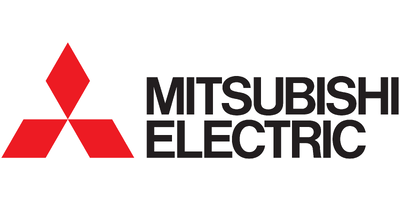The basic purpose of conductive work surfaces is to
provide a surface that is free of static charge and also is
capable of removing the static charge from conductive
items placed on it. The total resistance to ground
determines the level of charge and rate at which it will be
drained. A resistance to ground of 1000 megohms or less is
required on an 8200 mat to drain a charge to a level of 100
volts or less in one second from a person or tote box
charged to 5KV (ref.1, 2).
Resistance Measurement:
Measuring the resistance of the mat requires a high voltage
megohmmeter. The megohmmeter must have a test voltage
of 50-100 volts and a meter range of 0-1000 megohms. The
ground lead of the megohmmeter is attached to the ground
points of the mat. The other lead of megohmmeter is
attached to an electrode that is described in both ASTM F
150 and NFPA 56A paragraph 4-6.2.7(b).
The resistance to ground should be greater than 106
ohms and less than 109ohms. if the resistance is less than
106ohms, an alternate path to ground has been established
which bypasses the one megohm resistor in the ground
cord. If the resistance is greater than 109ohms, the ground
connection has been interrupted.
Cleaning:
Mats should be periodically cleaned with a detergent and
water solution. To reduce the possibility of leaving a
residue, detergents (rather than soaps) should be used.
Powdered detergents such as Tide®, Ajax®, etc. should be
added to water at a 1-2% concentration, liquid detergents
such as Wisk®, All®, etc. at a 2-3% concentration, and
general purpose cleaners such as 409®, Mr. Clean®, etc. can
be used full strength.
Normally, only a cloth that is thoroughly wetted with the
detergent solution is needed to wipe off the mat; however,
hardened stains may require brushing with a semirigid
bristled brush. The wiping or brushing action should be in a
circular motion to ensure removal of the particles from the
surface depressions. Extremely soiled mats may require
several repeated cleanings with a water rinse between each
cleaning. The water rinse should consist of wetting a cloth
with clean water and wiping the surface to remove loosened
dirt and detergent.
The final step should be to use a cloth dampened with
isopropanol and wipe the mat to remove any organic
contamination as well as the residual detergent. Avoid
using excessive isopropanol because the bottom foam layer
will absorb the solvent and cause the mat to swell.
Regardless of the technique used to clean the mats, the
previously described resistance measurement should be
performed to verify that the mat is functional.
Note: Read all Health Hazard, Precautionary, and First Aid
statements found in the Material Safety Data Sheet (MSDS)
and/or product label of cleaning materials prior to handling
or use.
Reference:
1. D. M. Yenni, Jr. "Basic Electrical Considerations in
the Design of a Static-Safe Work Environment", Proc.,
(NEPCON/WEST), March 1979, pp. 273-284.
2. J. R. Huntsman, D. M. Yenni, Jr., "Test Methods for
Static Control Products", Proc., EOS/ESD Symposium
1982, pp. 94-109.
Maintenance of Static Control
Systems 8200 Mats
Technical Brief – July, 1983 No. 113
3
Megohmmeter
Table
Mat
NFPA 56A
Electrode Ground
Connection
3
Electronic Handling & Protection Division
6801 River Place Blvd.
Austin, TX 78726-9000
http://www.3M.com/ehpd
Litho in USA.
© 3M IPC 1999 98-0798-0949-1(3-5-1.0)TR
40% Pre-consumer waste paper
10% Post-consumer waste paper
Important Notice
All statements, technical information, and recommendations
related to 3M’s products are based on information believed to be
reliable, but the accuracy or completeness is not guaranteed.
Before using this product, you must evaluate it and determine if
it is suitable for your intended application. You assume all risks
and liability associated with such use. Any statements related to
the product which are not contained in 3M’s current publications,
or any contrary statements contained on your purchase order shall
have no force or effect unless expressly agreed upon, in writing,
by an authorized officer of 3M.
Warranty; Limited Remedy; Limited Liability.
This product will be free from defects in material and manufacture
for a period of one year from the date of purchase. 3M MAKES NO
OTHER WARRANTIES INCLUDING, BUT NOT LIMITED TO, ANY
IMPLIED WARRANTY OF MERCHANTABILITY OR FITNESS FOR A
PARTICULAR PURPOSE. If this product is defective within the
warranty period stated above, your exclusive remedy shall be, at
3M’s option, to replace or repair the 3M product or refund the
purchase price of the 3M product. Except where prohibited by law,
3M will not be liable for any loss or damage arising from this 3M
product, whether direct, indirect, special, incidental or
consequential regardless of the legal theory asserted.



